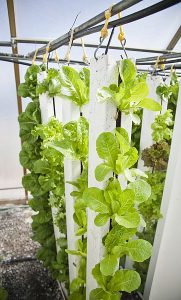City-level Action to Reduce the Environmental Impact of Food Systems
City-level Action to Reduce the Environmental Impact of Food Systems
- May 2018
- Journal Brief
- Dana Boyer and Anu Ramaswami
How do city-level actions related to food production, consumption, and food waste management affect the greenhouse gas (GHG), water and land impacts of the larger food system? Footprints of urban food systems take into account the GHG, land, and water impacts of food consumed by urban residents, encompassing the full supply chain from production, transportation, storage, and retail. Once calculated, urban food system footprints can be used to analyze scenarios that consider policy actions around equity, diet change, urban agriculture, food preparation, and waste management.
Download the brief using the link at the bottom of the page.
This brief is adapted from the following peer-reviewed journal article: Boyer, D. & A Ramaswami. (2017). “What Is the Contribution of City-Scale Actions to the Overall Food System’s Environmental Impacts?: Assessing Water, Greenhouse Gas, and Land Impacts of Future Urban Food Scenarios.” Environmental Science & Technology, 51, pp. 12035-12045. Access the full article here.





